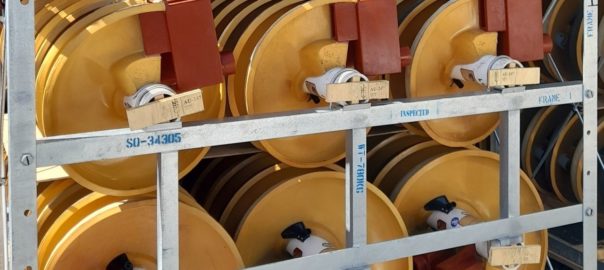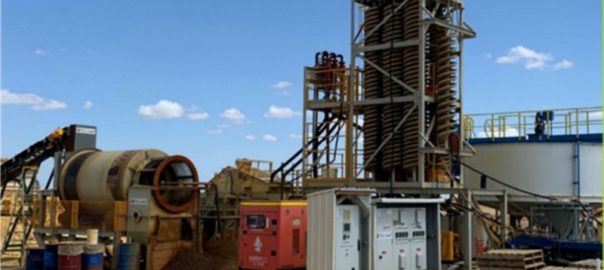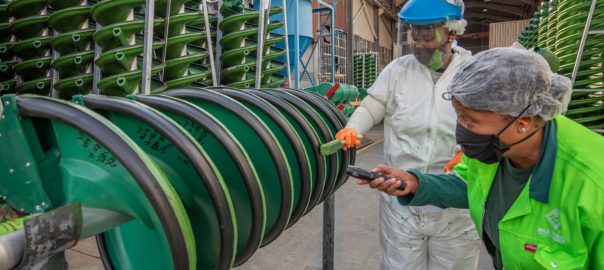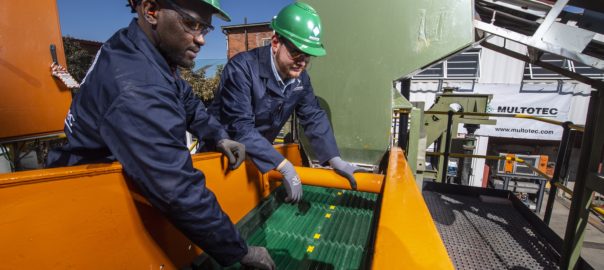Mineral Technologies, a Downer company, has added a new spiral separator to its MD range with the Australia-made WW7.
The WW7 are manufactured in the company’s ISO9001:2015-accredited Australian manufacturing facility and shipped to customers worldwide.
Designed with improved wash-water diverters, the new WW7 is great for operations requiring a simpler method of wash-water addition and control, according to the company. It does this with the introduction of a new diverter and secondary wash-water distributor.
Mineral Technologies says customers across North America and Europe are installing banks of WW7s for fine iron ore beneficiation, with the image above showing one of the latest shipments ready to leave the company’s facility.











